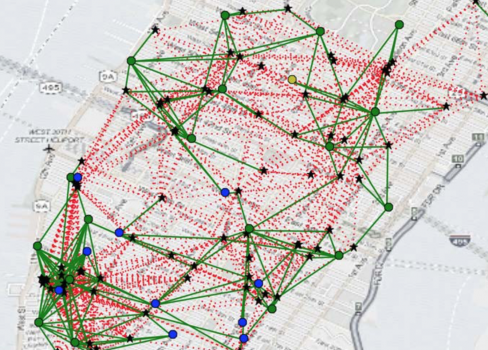A new study by MIT reveals that all 13,000 of New York City’s taxis could be replaced by 3,000 ride-sharing cars, allowing for less traffic and pollution overpowering the city. MIT’s Computer Science and Artificial Intelligence Laboratory (CSAIL) believes that these common urban problems could easily meet an end if customers carpooled for every ride. Using programs like the ride-sharing UberPOOL could also decrease street and sidewalk traffic by about 300%. The new concept could particularly be a lifesaver during major events like sports games and concerts, where multi-person vehicles come in handy.

MIT’s research comes from public data focusing on the city’s taxi rides, proving that four-person rides destined for places near each other would meet 98% of New York’s taxi demand. The system could also help to reduce the annual cost of congestion, which is currently at $160 billion. This math points to a typical waiting time of only 2.7 minutes and also tackles how efficiently 3,000 two-person cars and 2,000 10-person cars could meet demands. Researchers have even developed a speedy system that repositions cars while factoring in real-time demand.
“A key challenge was to develop a real-time solution that considers the thousands of vehicles and requests at once,” said Professor Daniela Rus, a project leader and director of CSAIL. “We can do this in our method because that first step enables us to understand and abstract the road network at a fine level of detail.”

Although it’s suspected that ride-sharing companies like Uber and Lyft are developing similar methodical approaches, Rus believes that her research group’s work is the first of its kind.
“To our knowledge, this is the first time that scientists have been able to experimentally quantify the trade-off between fleet size, capacity, waiting time, travel delay, and operational costs for a range of vehicles, from taxis to vans and shuttles,” Rus shared in a statement. “The system is particularly suited to autonomous cars, since it can continuously reroute vehicles based on real-time requests.”
Rus’ team is still perfecting its methods, using what’s called an “anytime optimal algorithm” to reach the best solution for this model. An anytime optimal algorithm is known to improve the more someone runs through it.
Advertisement
Learn more about Electronic Products Magazine





